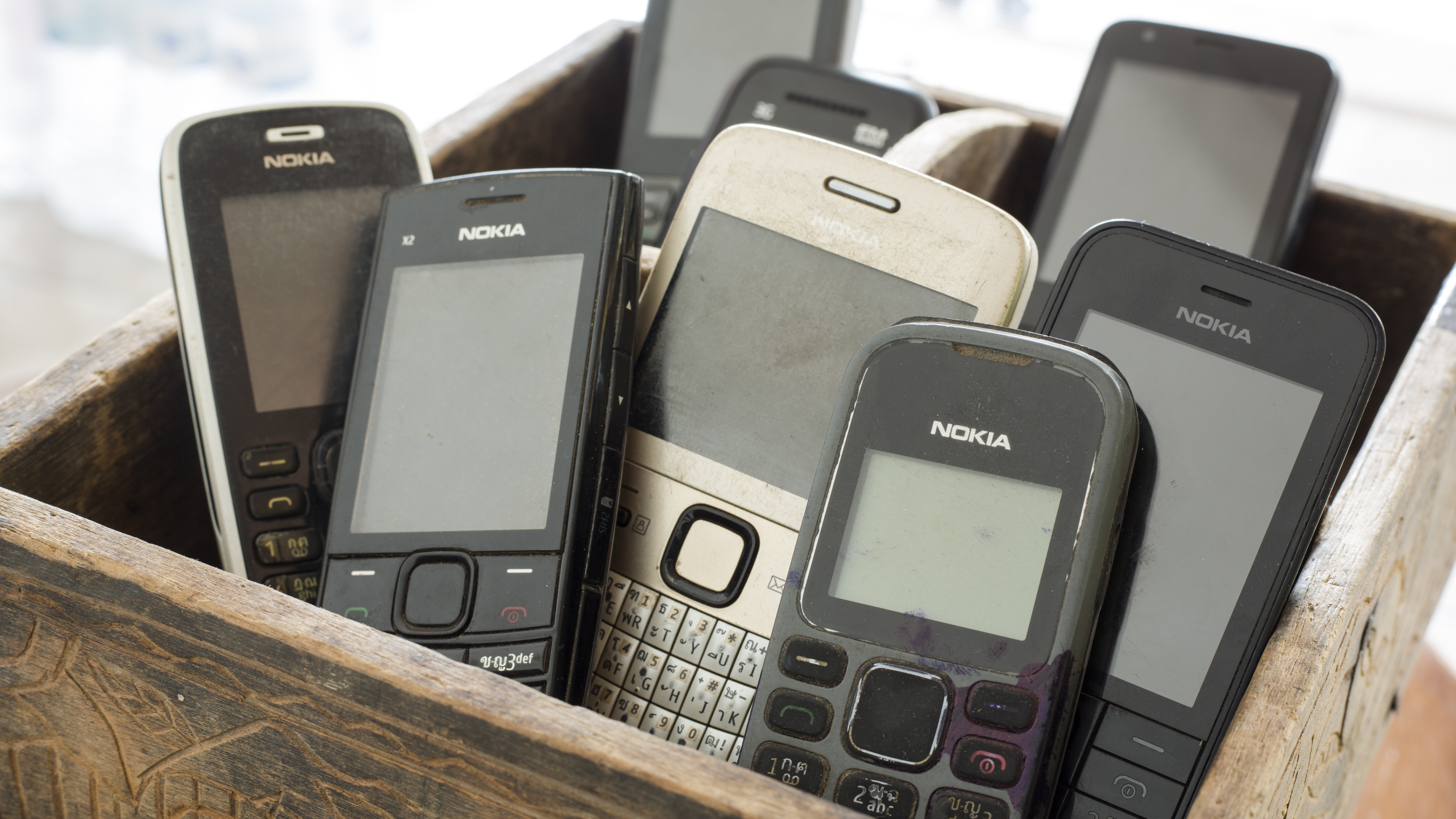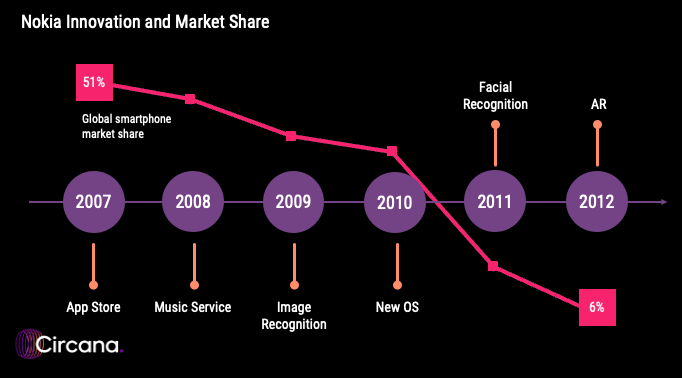
It is ten years since Nokia – at least for mobile phones – ceased to exist and I still miss the innovation that the company brought to mobile and beyond. I’m not alone: a couple of years ago, while playing with a retro Nokia device in the Netherlands, my phone rang. Seemingly everyone in the beer garden over the age of 30 looked up in recognition at the sound of the Nokia tune playing. Perhaps it is more of a European thing, where the company had more than 50% of the market share (Nokia never saw the same success in the US), but it is safe to bet that I was the only person in the garden – and probably the city – who was toting a Nokia phone that day.
The demise of Nokia’s phone business was, in large part, due to the launch of the Apple iPhone. Nokia had become so accustomed to being the top dog in mobile that it was unthinkable to the leadership there that anyone else could come along and threaten the status quo. And yet, just five years after the iPhone’s launch. Nokia’s worldwide market share had fallen from 51% to just 6%. Ouch.
The simple answer to Nokia’s demise is one of complacency: the company could not believe that any other vendor would be able to shake up the status quo so dramatically, and frankly discounted Apple as a computer manufacturer that did not understand the nuances of the mobile market. Rather, it should have seen Apple’s lack of mobile background as the biggest threat, as the company brought a completely fresh perspective to its design ethos.

But in many respects, Nokia was anything but complacent and it led innovation in many related areas. A few examples:
- App Store: Nokia launched an App Store in 2007, a year before anyone else
- Music Service: In 2008 Nokia offered unlimited music services with certain phones (for free). While it was not a streaming service (mobile Internet was not ready for that yet), it offered downloads of pretty much any song ever published.
- Image recognition: Launched in 2009, a year earlier than Google Goggles
- Facial Recognition: Launched in 2011, way ahead of the competition
- Augmented reality: Launched in 2012 under the name City Lens… and the competition took another 10 years to match this ability.
But despite leading in all these areas, it took just one missed significant shift in the market for Nokia to lose its dominance and begin the slide towards mobile obscurity. The launch of the iPhone introduced the touch screen and, more importantly, created a mobile phone that was Internet-first in its design ethos. That created a tipping point, changing the mobile “phone” into a mobile computer. Apple’s fresh approach helped to change what the phone was for and put Nokia onto the backfoot that led to additional mistakes, such as choosing the Windows mobile platform as its new solution.
So why bring this up, ten years after the effective death of a mobile monolith? Artificial Intelligence has the potential to create a similar tipping point for mobile devices, and the broader ecosystem of devices. Understanding how to implement AI (hardware or cloud) and what the service can do is an opportunity for a broad array of vendors. Get it right and they can soar; misunderstand the consumer market need – or view it from an individual device perspective rather than a broader ecosystem of devices – and vendors will be put on the backfoot just as Nokia was in 2007. And the stakes are far higher this time around as AI impacts the entire ecosystem of home devices, from the TV to home automation devices – even home appliances – and, of course, the far-from-humble smartphone.